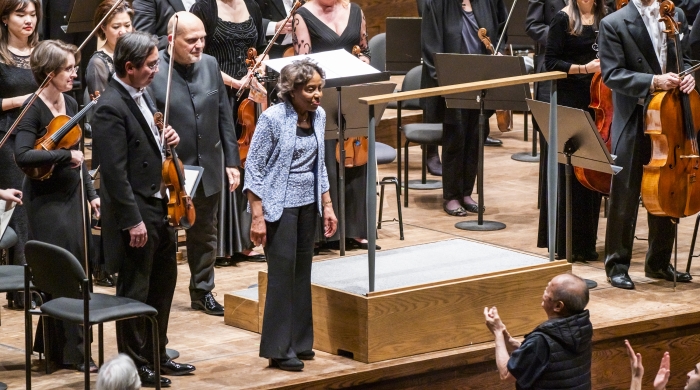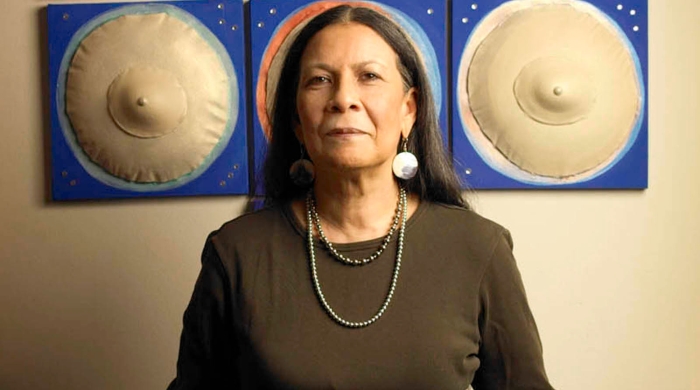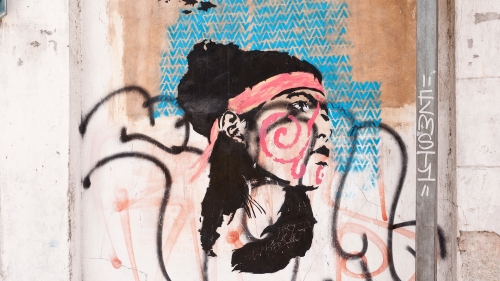The founder of the non-profit environmental initiative Art into Acres, Haley Mellin (PhD ’12) has been an artist from an early age; she went to her first life drawing class with her mother when she was in high school.
“I find art to be a way to spend time with yourself,” says Mellin. “Painting is a place for meditation and reflection on where you are at this time.”
Growing up in the San Francisco Bay area, Mellin studied at the University of California, Berkeley. While there, she received a Strauss Grant for a large-scale public service project, which she used to renovate educational urban gardens and teach in East Oakland. “My dad was pro-volunteering. We did a lot of public arts and environmental work growing up,” says Mellin.
After graduating with her BA in Art Practice and Education, Mellin moved to New York City to complete a residency at the Whitney Museum Independent Study Program. She then began researching graduate programs to combine her interests in art and sustainability and discovered NYU Steinhardt’s PhD in Visual Culture and Education.
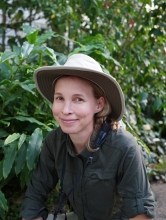
“I met Nicholas Mirzoeff, who was the founder of the program, and decided that the double focus of a visual culture approach to art education was perfect for me,” says Mellin. She spent six years completing the doctoral program, which has since been absorbed into the PhD in Media, Culture, and Communication at Steinhardt.
In 2017, Mellin founded Art into Acres, a non-profit that connects art and large-scale land conservation. Through the sale of gifted art works, the initiative uses the support to fund new protection designations and bolster threatened ecosystems such as tropical, cloud, and temperate forests. Conservation efforts are primarily community and locally led.
“As a young person, I knew I wanted to engage the art community with land conservation, because both are fundamentally focused on what we leave behind,” says Mellin. “I started Art into Acres because I wanted to link arts and conservation, which is one of the most important things we can do in terms of protecting biodiversity and supporting habitat for all species.”
Mellin continues, “Conservation is central to my art practice.” To date, Art into Acres has supported 34 million acres of newly protected land, from national and regional parks to indigenous reserves all over the globe. During this period, she was teaching visual culture concurrently at the Museum of Modern Art (MoMA), NYU, The Bruce High Quality Foundation University, and the Studio Museum in Harlem.
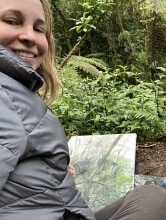
In addition to Art into Acres, Mellin has also cofounded several other initiatives to help “usher the arts community to sustainable practices,” such as Conserve.org, which allows people to select and conserve an acre of land; Art + Climate Action; and Artists Commit, which is an artist-led collective committed to a climate-conscious, resilient, and equitable future.
“One of the goals of Artists Commit is to do pro bono work to help artists calculate the environmental impact of their exhibitions,” says Mellin. “We’ll create climate impact reports by gathering data on factors like energy consumed and waste generated to help people understand how their art is affecting the climate, as decaying materials create emissions.”
In 2020, Mellin introduced carbon calculations at art museums in the United States, including the Guggenheim, MoMA PS1, the ICA Miami, the Hirshhorn Museum, and the De Young Museum, to help artists and curators better understand the impact of their shipping methods and other practices. She received a Teiger Foundation grant in 2022 to continue this pro bono work.
Mellin’s artistic practice continues to complement her conservation work; she recently completed a gallery show of paintings that she produced on-site in a historic cloud forest in Guatemala. The land is being conserved thanks to donations from 30 artists, with the money raised being matched by other conservation organizations.
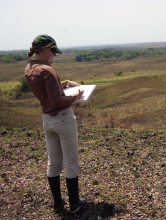
“It was so damp in the forest that I was painting inside a bubble tent to keep the canvas dry,” says Mellin. “I use gouache because it’s non-toxic, I recycle older canvases, and I use small frames so they can travel with me instead of needing to be shipped separately – this reduces the carbon emissions impact of my art.”
This spring, Mellin holds the 2023 Max Beckmann Distinguished Visitorship at the American Academy in Berlin. In the conservation space, she aims to continue honing her understanding of global biodiversity and advocating for a just and sustainable approach to conservation based on Indigenous rights and their ecological stewardship.
“Conservation is a zen activity because, if you do it well, it was as though you were never there – these places know best how to manage themselves, as they have done for millennia. It is an act of pointing, and of respecting, evolutionary biology,” says Mellin. “The wonders of the unknown appeal to me as an artist.”
Related Articles
2023 Valedictory Ceremony Dorothy Height Awardee: Tania León (BS ’71, MM ’75)
Tania León is an internationally renowned composer/conductor and Dorothy Height Distinguished Alumni Award winner.
2023 Doctoral Convocation Dorothy Height Awardee: Carmen Guillén Fariña (BS ’65)
Carmen Fariña is the former chancellor of the New York City Department of Education and Dorothy Height Distinguished Alumni Award winner.
2022 Convocation Honoree: Nadema Agard (BS ’70), Dorothy Height Distinguished Alumni Award Winner
Celebrated Native American visual artist Nadema Agard is the 2021 Dorothy Height Distinguished Alumni Award winner.

